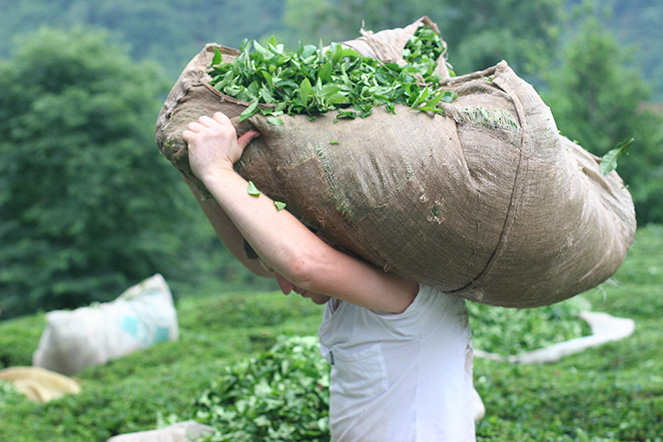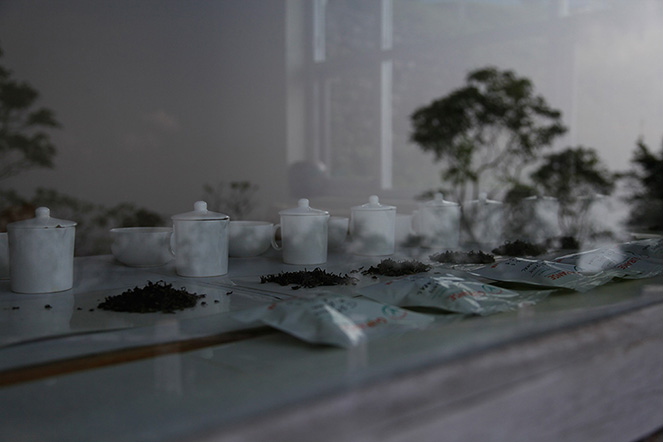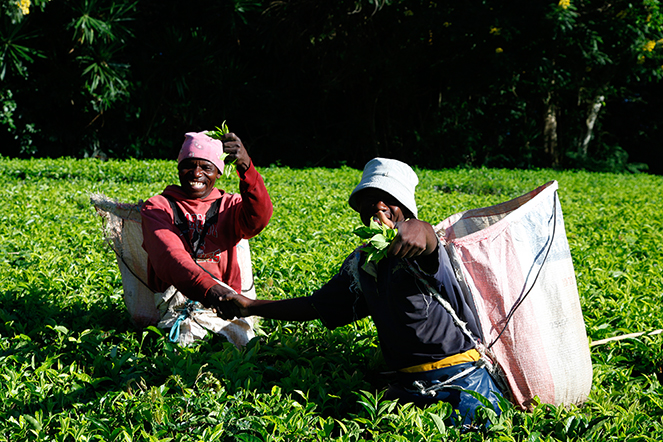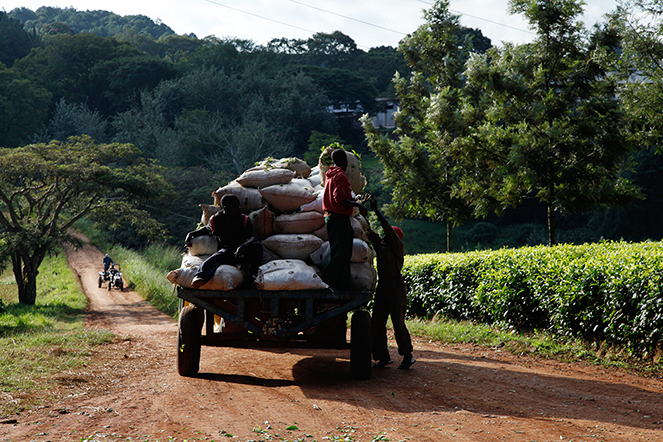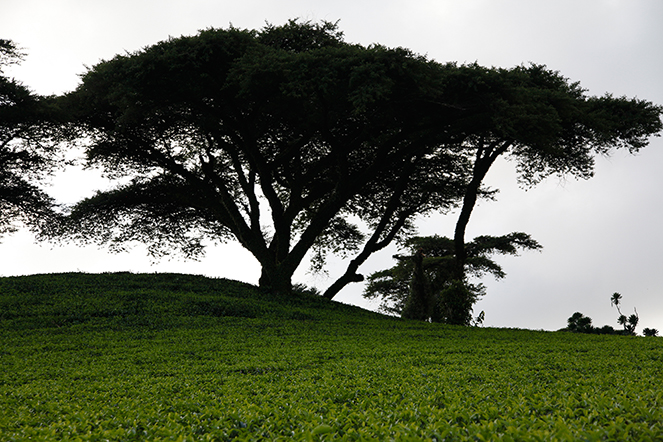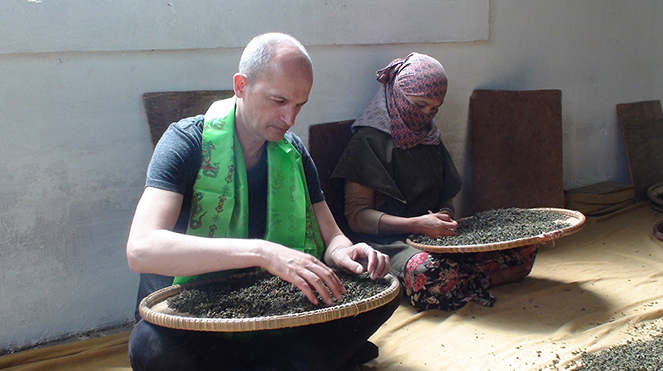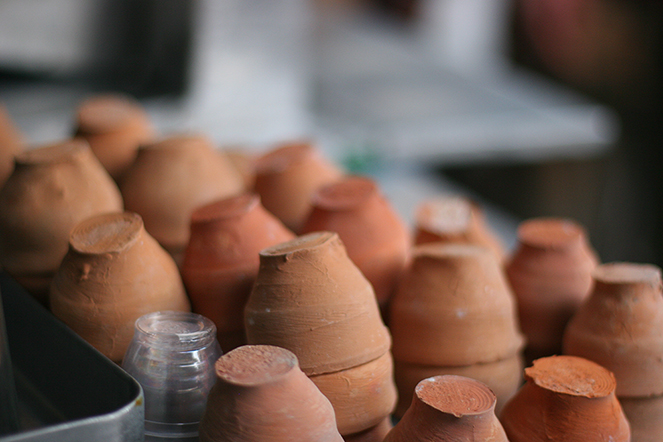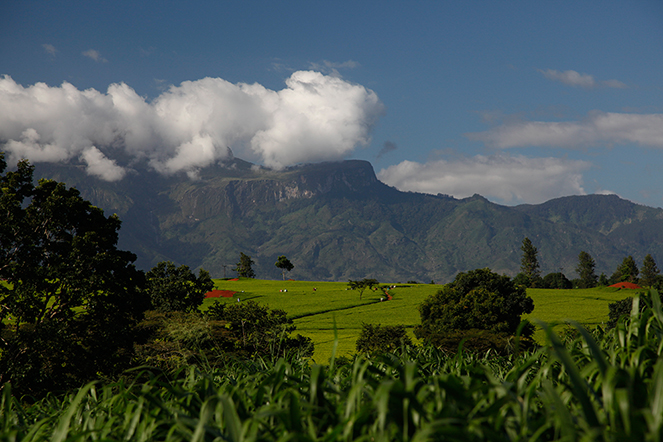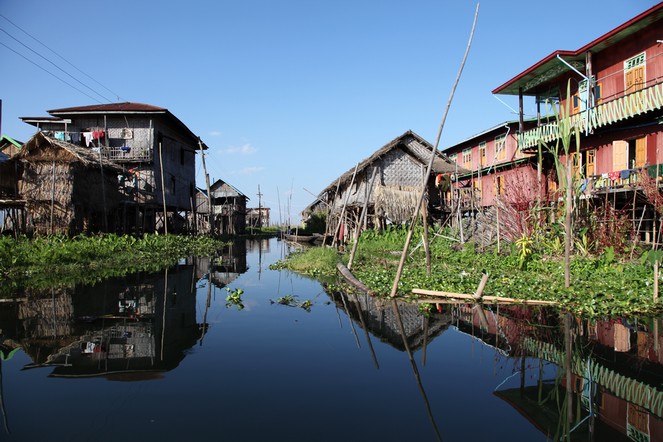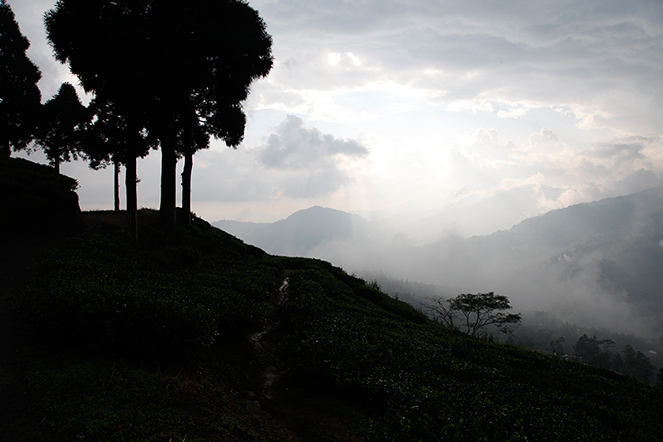In most regions of the world, tea leaves are transported by tractor after being harvested. In Turkey, you see men carrying absolutely enormous bags. They tumble them down the slopes, over the tea plants, until they reach the road.
Tasting and contemplating
The advantage of photographing a window is that you can layer two images: here, the tasting set being prepared, and the landscape reflected in the glass. It’s fun to combine and merge the two views. The meaning of the tasting becomes clearer: we drink the tea, which comes from nature, surrounded by the land from which it originated.
Delicious, fairly traded teas
Transporting freshly harvested tea: a crucial stage
Tea plants shaded by trees
In some countries, tea plants require cover. It depends on the climate. Strong sunshine dries out the ground, whereas tea plants love humidity. In addition, tea plants don’t like wind. The trees used differ from country to country but they tend to belong to the Leguminosae family. Pictured here is a fine Acacia abyssinica specimen.
Meticulous work
Unfired clay cups of Kolkata
See the world in a different way
Many of you spend hours in front of a computer screen. However, the world cannot be reduced to a few inches. To give you a different view of the world, I propose this photo, which you can use as wallpaper for your screen. For people with a sedentary lifestyle, it is recommended to take some time out to stretch, relax, walk a little. I also recommend you enjoy looking at this landscape while drinking your daily cup of favourite tea.
Taking a dip
The holiday season is upon us and with it, for many of you, comes the desire to take a dip. In Myanmar, Inle Lake is breathtakingly beautiful. The blue sky merges with the waters of the lake. Speaking of taking a dip, the houses here are built on stilts, and people grow their vegetables on small plots of floating earth. It’s magical.
Under the Himalayan clouds
During a heatwave you must remember to stay hydrated. You need to drink frequently. You can also cool your face, with a wet cloth or a facial mist. As for me, I like the original version of mist – it’s called the Himalayas. It is cool there, especially at this time of year, when clouds full of monsoon rain gather above your head.

